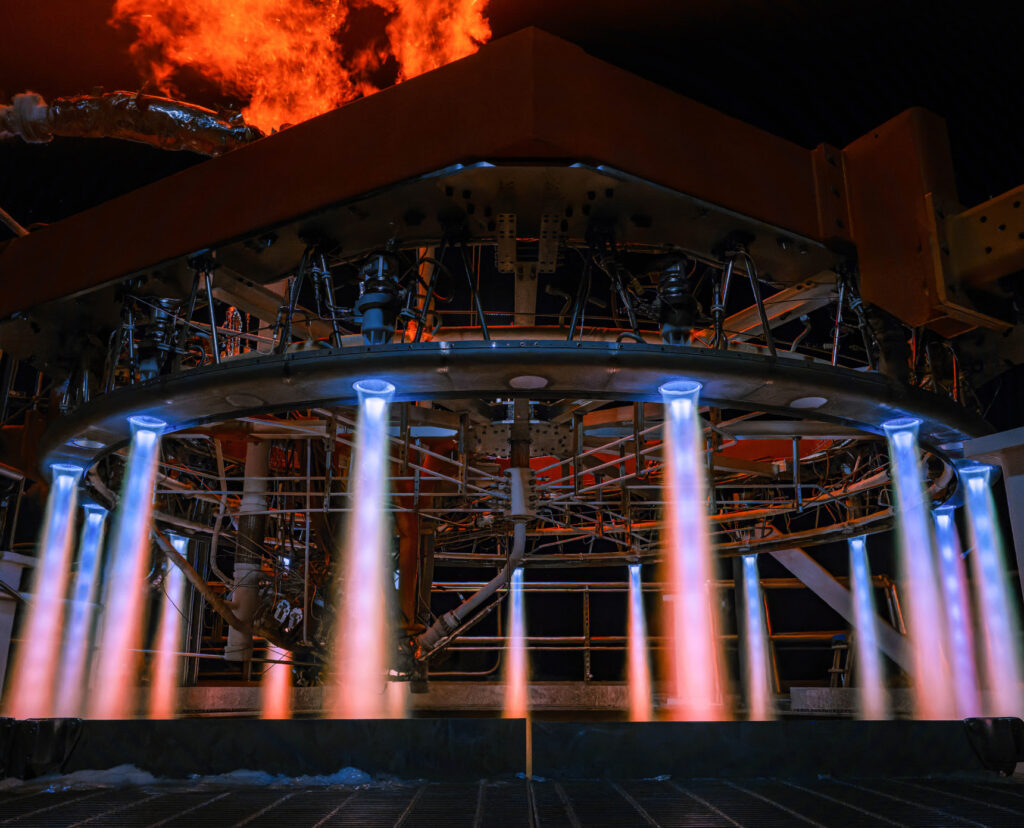|
|
|
September 24, 2023
Issue #5
|
|
|
A Closer Look at Firefly Aerospace's Reaver Rocket Engine
|
|
|
Firefly Aerospace has been garnering attention with its Alpha launch vehicle, and central to this vehicle is the Reaver rocket engine. This engine is crucial for Firefly's mission to provide cost-effective launch services. However, like any engineering endeavor in the competitive space industry, it comes with challenges and innovations. Here's a more critical examination of the Reaver engine.
|
|
|
|
Propellant Choice: LOX and RP-1
|
The Reaver engine utilizes a combination of Liquid Oxygen (LOX) and Rocket Propellant-1 (RP-1) as its propellant. This is a common choice in the industry for its efficiency and reliability. However, the choice of propellant is just the starting point; the engine cycle's efficiency and the combustion chamber's design are equally critical.
|
|
Engine Cycle: The Tap-Off Cycle
|
Firefly Aerospace has opted for a patented tap-off engine cycle for the Reaver engine. This cycle is known for its simplicity as it requires fewer parts than other cycles, potentially leading to lower maintenance and manufacturing costs. However, the tap-off cycle is not without its challenges. It can be less efficient than other cycles, and the technology is not as mature as the more commonly used gas generator or staged combustion cycles.
|
|
Thrust Capabilities
|
With a vacuum thrust of 801 kN, the Reaver engine falls into the category of medium-lift engines. This thrust level is suitable for a range of payloads, but how it compares to other engines in its class regarding efficiency, reliability, and cost-effectiveness remains critical.
|
|
Specific Impulse (ISP)
|
The Reaver engine has a Specific Impulse (ISP) of 295.6 seconds, measuring engine efficiency. While this is a respectable figure, it's worth comparing with other engines in its class to understand its competitive position better.
|
|
Manufacturing and Quality Control
|
Manufacturing entirely in the USA could be seen as a positive aspect of quality control and adherence to industry standards. However, it also raises questions about cost-effectiveness, especially in a global market with fierce competition.
|
|
Mission Versatility
|
The Reaver engine is designed to support a variety of missions. However, the real test of its versatility will come from its actual launch performance, ability to deliver payloads to different orbits, and adaptability to different mission profiles.
|
|
Analysis
The Reaver rocket engine is a significant part of Firefly Aerospace's ambitions in the space industry. While it showcases some innovative approaches, like the tap-off engine cycle, it also faces stiff competition and challenges inherent in rocket design and manufacturing. Its success will likely hinge on technical excellence, cost management, and successful mission outcomes.
|
|
|
|
|
|
Stoke Space Unique Rocket Engine
|

|
|
|
|
Stoke Space has designed a unique rocket engine powered by hydrogen and oxygen propellant. The design features a conical capsule-like upper stage with an integral fairing. The propulsion system of this upper stage is quite exotic and unique, involving a large pump that feeds propellant to up to 30 combustion chambers distributed around the rim of its heat shield. This design was revealed on February 7, 2023, according to a Teslarati article.
|
|
|
In a recent test, Stoke Space launched a brand-new hydrogen-oxygen engine on a vehicle that took off and landed vertically, as GeekWire and Yahoo Finance reported. This engine is unique, indicating a significant innovation in rocket engine technology.
|
|
|
Lastly, Stoke Space's official website mentions an actively cooled metallic heat shield and an integrated modular LH2/LOX engine designed for minimal refurbishments between flights, unlocking rapid turnaround.
|
|
Food for Thought
Innovation in Propulsion: How does the unique design of Stoke's rocket engine with multiple combustion chambers around the rim of its heat shield contribute to its performance and reusability?
|
Impact on Space Exploration: With such innovative rocket engine designs, what could be the potential impact on future space exploration missions, especially in cost, efficiency, and frequency?
|
|
Comparison with Competitors: How does Stoke's Aerospace Unique Rocket Engine compare to other contemporary rocket engines, especially those designed by significant players like SpaceX?
|
|
|
|
|
|
Hey Subscribers
Thanks a lot for sticking around. I've been trying to get the Early Access Release of Meco Rocket Simulator out, but it's been more challenging than expected. On the bright side, I've got the simulator working on Windows, figured out an excellent way to create game art using AI magic, and set up a Wiki to help users.
|
However, I've hit a snag with a part of the simulation engine, and having a custom AI to help with rocket science learning is still a far-off dream. I've been cleaning up the code, fixing bugs, and adding new features to improve the simulator.
|
I am still working towards the version 0.1 release, and every bit of progress counts. Your patience means a lot, and I'm keeping at it to get you a great simulator.
|
|
|
|
|
|
|
|
|
   
|

|
|
Copyright (C) 2023 Loren Aerospace Ltd. All rights reserved.
|
|
|
|
|
|
|